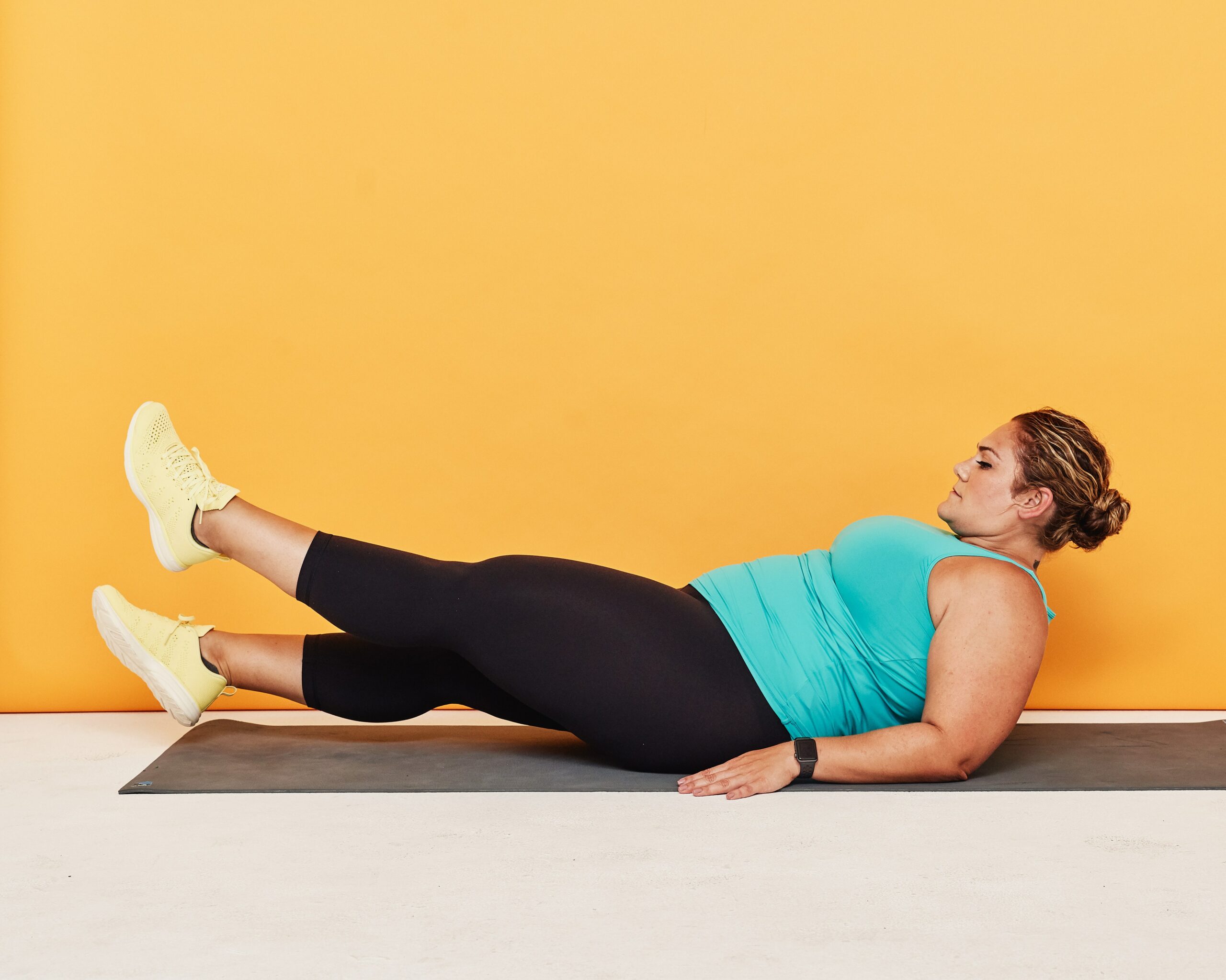Despite popular belief, short workouts are actually quite beneficial when you’re short on time—especially for your core muscles. In fact, a quick core workout like the one below is one of the most effective ways to train your abs without any equipment.
This core workout, created by Alicia Jamison, C.P.T., a NASM-certified personal trainer at Bodyspace Fitness in New York City, makes an excellent finisher after your favorite workout. The role of a finisher, according to Jamison, is to expend your energy and empty your tank before you cool down. And, especially if you’re pairing it with a more traditional strength-training session—think straight sets rather than circuits—it’ll give you a cardiovascular burst to end things off strong.
This three-move workout is a solid finisher because it’s quick, dynamic, and it has you work for time, where you try to complete as many reps as possible (while maintaining proper form) during the 40-second work periods. “Forty seconds is a long time for a core exercise, and it gives you a lot of wiggle room to see just how much you can handle,” Jamison tells SELF. “You might not be able to get through a full 40 seconds, but allowing yourself the full time to explore will give you room to improve. This workout really allows for people of all fitness levels to use it as a finisher.” (While this is meant to be a final burnout, it’s important to work at a sustainable pace—if you feel yourself burning out too soon, that can be a cue to slow down your reps.)
The 10-minute routine can also be used to invite movement into a busy day when you don’t have time for a full session. And while it’s easy to think that more core exercises, or long core workouts, equal a stronger core, Jamison says that the general population really shouldn’t be training their core for long periods of time every day.
“We don’t get stronger by working out; we get stronger by recovering,” she says. “When you’re working out, you’re tearing those muscle fibers apart, and your core especially needs time to recover in order for it to get stronger.” She recommends warming up and cooling down with a few core exercises two to four times per week.
A strong core is important, not just while you’re working out—it provides the stability to help you lift heavier weights—but during everyday life, too. Core workouts are key to integrate into your training routine, because a strong core makes regular tasks easier: You need solid core strength to lift things, reach overhead, and twist since it keeps you stable and provides a solid foundation. Plus, your core protects your spine, and a strong core can also help ward off back pain. Remember, your core isn’t just made up of your rectus abdominis, the muscles that run vertically across your abdomen. Your core also includes your internal and external obliques (the muscles along your sides), transverse abdominis (the deepest core muscles), diaphragm, pelvic floor, multifidus (the back muscles along your spine), and your glutes.
For this quick core workout, engage your glutes and lock your shoulders down to keep your posterior chain activated—including those sneaky back muscles. Most importantly, Jamison says, remember to breathe.
“When people do core exercises, they think they have to hold their breath the entire time, and that’ll mess you up,” she says. “If your respiratory system is not in line with your muscular system, that’ll make your workout so much harder—and not in a way that makes you stronger.” What’s more, when you exhale, your diaphragm contracts downward, which is a great way to engage your abs and put them to work.
Ready to challenge yourself with this fiery core finisher? Here’s everything you need to get started.
The Workout
What you’ll need: An optional exercise mat for extra cushioning.
The Exercises
- Flutter kick
- Forearm side plank twist
- Russian twist
Directions
- Perform each exercise for 40 seconds, taking 20 seconds of rest after each move. (For the forearm side plank twist, stay on the left side for the first round, switch to the right side for the second round, and switch halfway through for the last round, so you’re doing each side for 20 seconds.)
- Complete the circuit three times total.
Demoing the moves below are Morit Summers (GIF 1), a Brooklyn-based trainer and the owner of body-positive gym Form Fitness Brooklyn; Crystal Williams (GIF 2), a group fitness instructor and trainer who teaches at residential and commercial gyms across New York City; and Amanda Wheeler (GIF 3), a certified strength and conditioning specialist and co-founder of Formation Strength, an online women’s training group that serves the LGBTQ community and allies.

